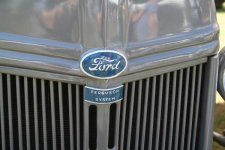super55
Platinum Member
- Joined
- Jan 27, 2012
- Messages
- 964
- Location
- Great North of Michigan
- Tractor
- Oliver Super55, John Deere 4310, John Deere 4400, Kubota L2500 (had),
Wheat farmer you are correct there are huge savings to be made with going with a 2WD instead of a 4wd as with going with a gear transmission or a hydrostatic would be.
Only you know what your specific needs are. If I was doing tons of field work and very little loader work I would do just as you stated go with a larger 2wd with more weight and PTO hp than over a smaller/lighter 4wd tractor. A friend of mine who's a farmer once told me if you need 4wd in the field than you shouldn't really be in the field to begin with because it's going to be more work than its worth trying to repair ruts, unclog planters or digging yourself out.
I do small scale field work I'm sure no where on the level you are at but when I do I leave my 4wd John deere at home and grab my old Oliver super 55 that is 2wd that doesn't even have power steering just because it is a better tractor for field work. With independent braking and a much tighter turning radius I can spend more time going back and forth versus having to back up. From my experience the traction gained from a 4wd with R4 industrial compared to a weighted 2wd with ags R1 and differential lock is minimal if any. If you do get a tractor with 4wd get ags all the way around. My personnel opinion of R4 industrials is they do a little bit of everything but they don't do any of it well.
Only you know what your specific needs are. If I was doing tons of field work and very little loader work I would do just as you stated go with a larger 2wd with more weight and PTO hp than over a smaller/lighter 4wd tractor. A friend of mine who's a farmer once told me if you need 4wd in the field than you shouldn't really be in the field to begin with because it's going to be more work than its worth trying to repair ruts, unclog planters or digging yourself out.
I do small scale field work I'm sure no where on the level you are at but when I do I leave my 4wd John deere at home and grab my old Oliver super 55 that is 2wd that doesn't even have power steering just because it is a better tractor for field work. With independent braking and a much tighter turning radius I can spend more time going back and forth versus having to back up. From my experience the traction gained from a 4wd with R4 industrial compared to a weighted 2wd with ags R1 and differential lock is minimal if any. If you do get a tractor with 4wd get ags all the way around. My personnel opinion of R4 industrials is they do a little bit of everything but they don't do any of it well.

